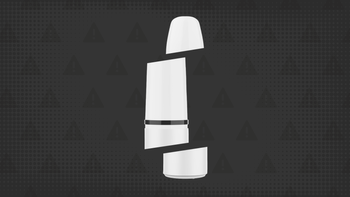
How to Quit Vaping: 8 Tips and Treatments That Can Help
Key takeaways:
Vaping can be a difficult habit to kick. But there are tips and treatments that can help.
There aren’t any FDA-approved treatments to quit using electronic cigarettes. But treatments approved to help quit traditional cigarettes may work for e-cigarettes.
Nicotine withdrawal can make it challenging to quit vaping. Having support through the process can help you have more success.
Table of contents

With the popularity of vaping, illnesses related to vaping continue to be an issue. And with ongoing research, there are renewed concerns about the unique health effects of vaping. If you currently vape or have a friend or family member who does, here are some treatments and tips on how to quit vaping.
Reasons to quit vaping
Recent studies suggest that vaping may have many serious health effects. Using electronic cigarettes may increase your risk of:
Teens who use e-cigarettes may also be at greater risk of smoking traditional cigarettes. This can also lead to serious health effects, like:
Heart disease
Lung disease
Cancer
Treatments that can help you quit vaping
There are many FDA-approved treatments to quit smoking, but none specifically target vaping. It’s too early to know if treatment options used for quitting traditional cigarettes will help for e-cigarettes. But early research shows promise. If you’re ready to quit vaping, connect with a healthcare professional about strategies for vape cessation.
Nicotine withdrawal symptoms: Withdrawing from nicotine can bring on some uncomfortable symptoms. Here’s what to expect as you quit and tips to help.
Vaping vs. smoking: Some evidence suggests that vaping can help people quit smoking. Learn more about cessation options and effectiveness.
All about nicotine replacement therapy (NRT): Quitting cold turkey is hard. NRT can help. Learn about the different NRT options.
Here are treatment options and vape alternatives to help you quit.
1. Nicotine-replacement therapy
Nicotine-replacement therapy (NRT) gives you low doses of nicotine without the added harmful chemicals. It helps to reduce cravings for nicotine and the symptoms of nicotine withdrawal.
NRT comes in many forms, including:
Patches
Gums
Lozenges
Nasal sprays (by prescription)
Inhalers (by prescription)
The NRT inhaler looks and works like an e-cigarette. It contains nicotine cartridges that are loaded into a device to “smoke” like a cigarette.
2. Varenicline
Varenicline (formerly available as brand name Chantix*) is a prescription medication to help people quit traditional cigarettes. Researchers think it blocks the same receptors in the brain where nicotine attaches. And this can help break the cycle of addiction.
There isn’t much research available to see if varenicline can help people quit e-cigarettes. But one small study shows it might help people who use both cigarettes and e-cigarettes.
*Good to know: In 2021, Pfizer recalled brand name Chantix due to chemical impurities. Chantix has since been discontinued. But there are still generic versions of varenicline available. Learn more about varenicline safety and side effects.
3. Bupropion
Bupropion is an antidepressant that’s also used to help people quit smoking. When used for helping people quit traditional cigarettes, it’s about as effective as NRT. But it might be less effective than varenicline. Scientists think it works by reducing withdrawal symptoms from nicotine.
5 steps to quit vaping
In addition to medications, these five tips may help you quit vaping.
1. Get support from family and friends
Studies show that support from family and friends can raise your motivation to quit traditional cigarettes. So, there’s good reason to believe that a strong support network can help people who use e-cigarettes as well.
A support system can help you:
Understand the importance of quitting
Be more accountable
Substitute smoking behaviors with nonsmoking behavior
Get through potential relapses or setbacks
To learn how to help a friend stop smoking, check out Smokefree.gov for additional tips.
2. Connect with more resources
There are many resources available to help you through your journey. Although there are many strategies for vape cessation, most people don’t use them when trying to quit. But studies show that people who use support tools to quit smoking are more likely to be successful. Some organizations have even launched quitlines (cessation hotlines) for vaping. You can also talk with a healthcare professional online about ways to help quit vaping.
Don’t feel like you need to do this alone. Whether you turn to a counselor, an app, or a quitline, getting help can greatly improve your chances of quitting for good.
3. Understand your triggers
Knowing what triggers your desire to vape can help you break the habit. Everyone has different triggers.
To better understand what types of situations make you want to vape, ask yourself questions like:
Do you vape at parties?
Do you like to vape between classes or on a lunch break at work?
Is your vaping associated with certain emotions, like stress?
You may have to form new patterns, coping skills, and habits to help manage your triggers.
4. Prepare for cravings
After figuring out what triggers your craving to vape, you can create a plan. For example, if you vape between classes or at lunch, you can plan an activity during that time to stay busy. Or maybe you can find alternatives to vaping, like chewing gum or drinking coffee. And a support group can help. Ask others to hold you accountable when the cravings to vape are strong.
Cravings for nicotine can start as soon as 30 minutes after your last use. So, it’ll be easier to push through a craving, if you’ve prepared ahead of time.
5. Be patient with yourself
Quitting is a journey. And setbacks will happen. So, don’t consider your attempt to quit a failure. You can always regroup and start again.
Reach out to your support network when you’re struggling. Even if you have a slip or two, you can still prevent old habits from returning.
How to quit vaping cold turkey
Quitting cold turkey means you stop using a substance suddenly, rather than decreasing use over time. Most people who want to stop smoking cigarettes try to quit cold turkey. But this doesn’t mean it’s best to quit vaping or smoking cold turkey.
This method works for some people, but it can be challenging. In people who smoke traditional cigarettes, research suggests that quitting works best with lots of support.
Tips for coping with nicotine withdrawal
Nicotine withdrawal is usually uncomfortable, but often it’s a short-lived experience. Symptoms tend to peak within 3 days and lessen after 1 week.
Common nicotine-withdrawal symptoms include:
Increased appetite
Irritability
Trouble sleeping
Dry mouth
Headaches

Here are some tips that may help you manage nicotine withdrawal and quit vaping.
Take it one day at a time
Every day you don’t use nicotine is a win. Celebrate each day you don’t vape. With time, nicotine-free days become weeks, months, and years.
Move your body
Physical activity is a great way to cope with nicotine withdrawal. Moving your body can help relieve the stress and anxiety that withdrawal can bring. And it can help balance any increase in appetite you may experience.
Find alternatives or substitutes for vaping
When you get cravings for nicotine, it helps to have alternatives to vaping. Sometimes putting something else in your month instead of a vape pen can satisfy the craving. Some people try to use a “fake vape” for quitting, or a vape without a nicotine cartridge.
Hard and crunchy snacks often work well, too, including these options:
Hard candy
Chewing gum
Carrots
Pickles
Nuts
Celery
How long does it take to quit vaping?
Everyone’s journey to quit vaping is likely to look different. Withdrawal is the biggest barrier to successfully overcoming nicotine addiction. Factors like how much you vape and how long you’ve been vaping may also come into play. Resources and support tools are likely to improve the quitting process. The important thing is to stick with it. For most people, learning how to quit vaping may take a few attempts.
Frequently asked questions
There’s no one “best” way to quit vaping. Having support during the process will likely help. And keep in mind that it may take some trial and error to find the strategies that work best for you. This may be a combination of medication treatment and lifestyle changes.
Vaping exposes your lungs to harmful chemicals. Researchers continue to study how vaping affects lung health. So, beyond quitting and managing any nicotine withdrawal symptoms, you can take steps to help your lungs recover. Detox from vaping may include breathing exercises to increase lung capacity. Make sure to get medical attention if you have trouble breathing or a cough that doesn't go away.
Quitting vaping while pregnant can be challenging. But it’s among the best things you can for your health and the health of your pregnancy. There are lots of resources to help you quit. But there’s limited research on the safety of NRT during pregnancy. So, make sure to connect with a healthcare professional to get help with vaping or nicotine cessation strategies.
The bottom line
With the risks of vaping becoming clearer, interest in quitting is growing. Though there aren’t any FDA-approved treatments for quitting vaping yet, treatments for smoking may help. Getting help and building a support system can increase your chances of success, keep you accountable, and help you stay on track. It’s possible to quit vaping for good — and you don’t have to do it alone.
Why trust our experts?



References
Alzahrani, T., et al. (2018). Association between electronic cigarette use and myocardial infarction. American Journal of Preventive Medicine.
American Cancer Society. (2024). Help for cravings and tough situations while you're quitting tobacco.
Barua, R. S., et al. (2018). 2018 ACC expert consensus decision pathway on tobacco cessation treatment: A report of the American College of Cardiology Task Force on clinical expert consensus documents. Journal of the American College of Cardiology.
Centers for Disease Control and Prevention. (2023). Tips for quitting.
Centers for Disease Control and Prevention. (2023). Top 10 questions about quitlines.
Centers for Disease Control and Prevention. (2024). E-cigarette use among youth.
Centers for Disease Control and Prevention. (2024). Smoking cessation: Fast facts.
Committee on Obstetric Practice. (2023). Tobacco and nicotine cessation during pregnancy. American College of Obstetrics and Gynecology.
Crippa, G., et al. (2018). Effect of electronic cigarette smoking on blood pressure in hypertensive patients: Evaluation by non-invasive continuous ambulatory blood pressure measurement. Journal of Hypertension.
Ghosh, A., et al. (2019). Chronic e-cigarette use increases neutrophil elastase and matrix metalloprotease levels in the lung. American Journal of Respiratory and Critical Care Medicine.
Gotts, J. E., et al. (2019). What are the respiratory effects of e-cigarettes? The BMJ.
Hajek, P., et al. (2019). Are ‘dual users’ who smoke and use e-cigarettes interested in using varenicline to stop smoking altogether, and can they benefit from it? A cohort study of UK vapers. BMJ Open.
Honeycutt, L., et al. (2022). A systematic review of the effects of e-cigarette use on lung function. NPJ Primary Care Respiratory Medicine.
Silver, B., et al. Successful use of nicotine replacement therapy to quit e-cigarettes: Lack of treatment protocol highlights need for guidelines. Clinical Case Reports.
Smokefree.gov. (n.d.). How to support your quitter.
Smokefree.gov. (n.d.). Know your triggers.
Soulakova, J. N., et al. (2018). Motivational benefits of social support and behavioural interventions for smoking cessation. Journal of Smoking Cessation.
Sundar, I. K., et al. (2016). E-cigarettes and flavorings induce inflammatory and pro-senescence responses in oral epithelial cells and periodontal fibroblasts. Oncotarget.
Warner, C., et al. (2005). How does bupropion work as a smoking cessation aid? Addiction Biology.

























